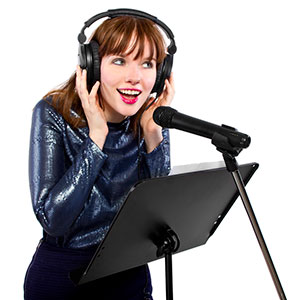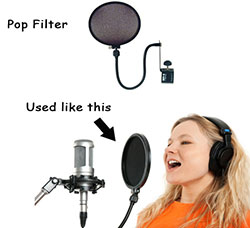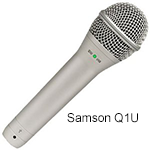 Voice over recording equipment is more powerful and more affordable than ever before in 2017. Unlike the needs for musicians, voice over actors need very little in order to produce professional sounding results from their voice recording studio right from home.
Voice over recording equipment is more powerful and more affordable than ever before in 2017. Unlike the needs for musicians, voice over actors need very little in order to produce professional sounding results from their voice recording studio right from home.
Before I start claiming that all you need is a mic and a computer (which is pretty much true), or that the mic can be cheap (also true), I should qualify something.
Time Versus Money
In general, the cheaper the microphone and/or interface, the longer it will take you to record professional sounding voice overs. It is possible. But you sort of trade time for money. And for some, that’s OK. They may have more time than money. Lots of people do.
I actually include “time” in my list of voice over recording equipment. The reason for this is that you CAN record decent quality sound from a mic costing about 50 bucks (what I consider the minimum). But the less expensive gear tends to also record noise.
It is definitely possible to fix most noise problems with software after your record your voice. But that takes time. Some noise removal takes quite a lot of time.
What Takes So Long?

For instance, fixing p-pops (see our post How to Fix a “P-Pop” in Your Audio With Sound Editing Software for more on that) takes a lot more time to fix than to actually read the script you are recording. Removing saliva noises (see my post on that here How To Remove Saliva Noises From Voice Recordings) can take just as long. So if you are doing both, well you see where this is going.
I’ve now mentioned two bits of voice over recording equipment – time and a pop-filter. The pop filter will help prevent most of the p-popping, that bane of voice over recording. But I have never yet recorded a vocal where the filter prevented ALL p-pops. So you’ll want to know how to get rid of them after the fact, which is covered in the article linked above.
So What Are The Other Pieces Of Voice Over Recording Equipment You’ll Need?

Earlier I mentioned a microphone. I also said I thought you’d need to spend at least $50 or so, minimum, in order to get into the realm of professional sounding audio. That is how much it costs for a USB mic called the Samson Q2U (or Q1U). [update: The Q2U, which is the latest version of the Q1U, now has BOTH an XLR output AND a USB. That’s huge news. I’ll be doing a review of this mic in the coming weeks. Watch this space.]
If you can afford a bit more, I recommend the kind of set-up used my most professionals. By that I mean a standard (non-USB) microphone and an audio interface. The interface is a box that plugs into a computer, usually via USB. You plug the microphone into the interface.
The KIND of mic I recommend as your first upgrade from a USB mic is a “large diaphragm condenser” microphone. There are terrific for vocals. A good entry-level large diaphragm mic is an Audio-Technica AT2020, which you can get for about $99.
As for the interface, a great option is a Focusrite Scarlett Solo. One of those will also run about $99. Then along with that, of course you’ll need accessories like a mike stand and cable, and headphones to allow you to listen very closely to your recording, making sure you have no little noises between words and phrases. Those can be hard to hear with just speakers alone.
Amazon has a studio kit that has all you need to get started. It has the Focusrite interface, microphone, mic cable and headphones. Here is a link to the Focusrite Scarlett Solo Studio Bundle. That bundle, plus the addition of a mic stand and pop-filter, will run about $256.
the last piece of your voice over recording studio puzzle is the software. Fortunately, the free Audacity is truly all you need to get started. You can learn how to use it in our course, the Newbies Guide To Audio Recording Awesomeness.
As you are able to afford it, you can easily upgrade this studio by trying out better and better mics. But you may not ever need to! You may find the studio bundle is all you need to sound as professional as necessary to become a pro.

[…] don’t need to use a lot of expensive voice over recording equipment, but you do need to know some things about how to use what you DO […]